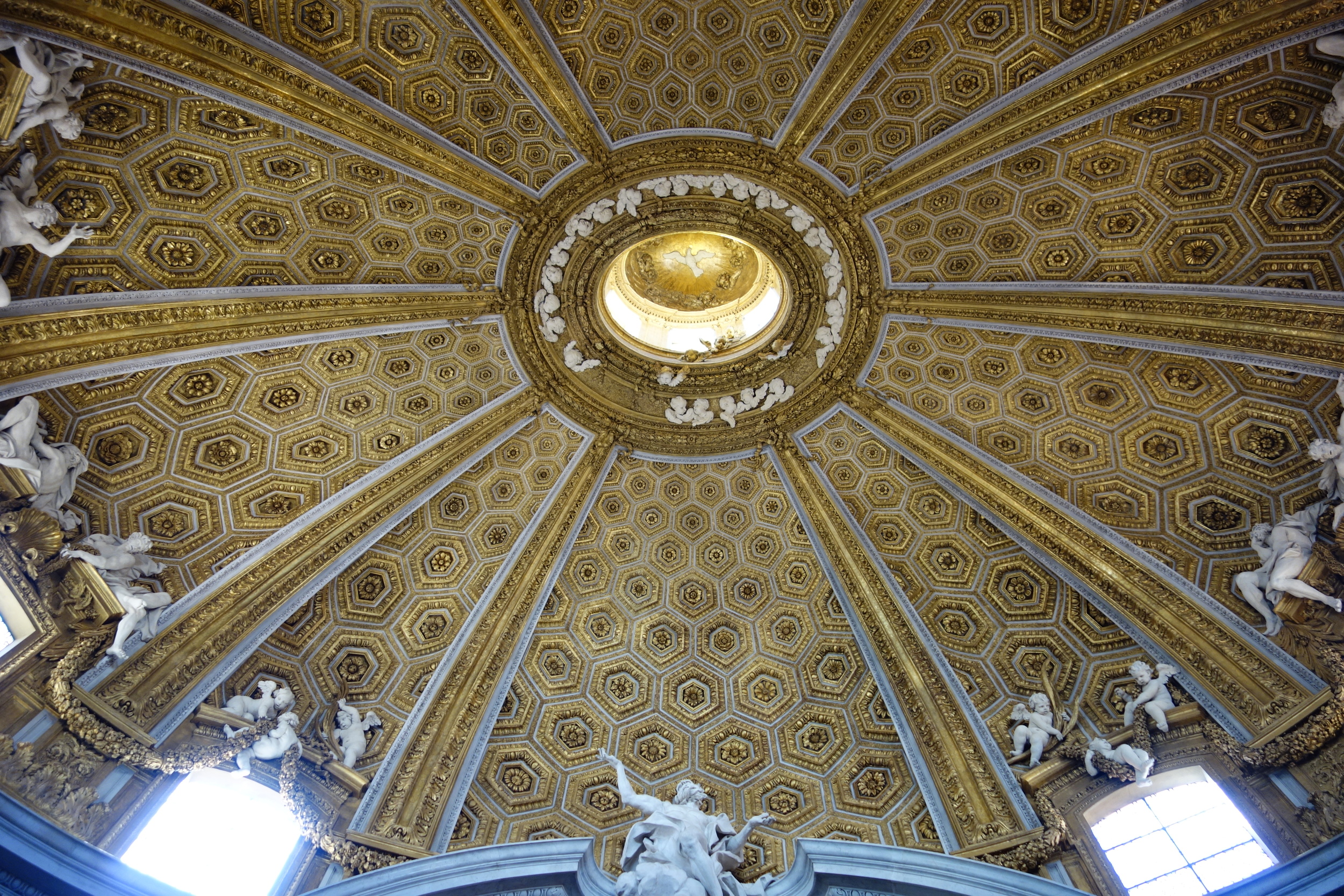
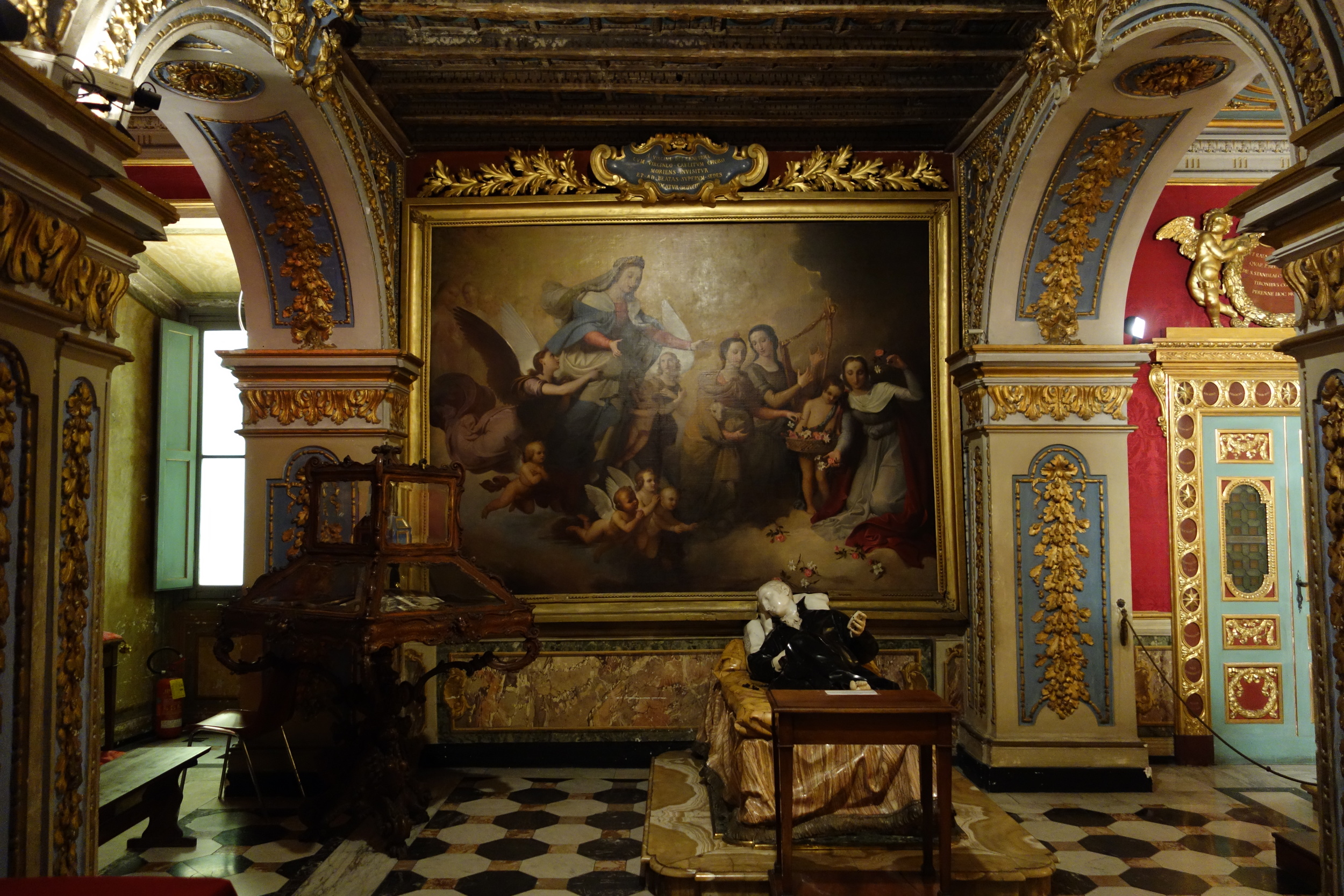
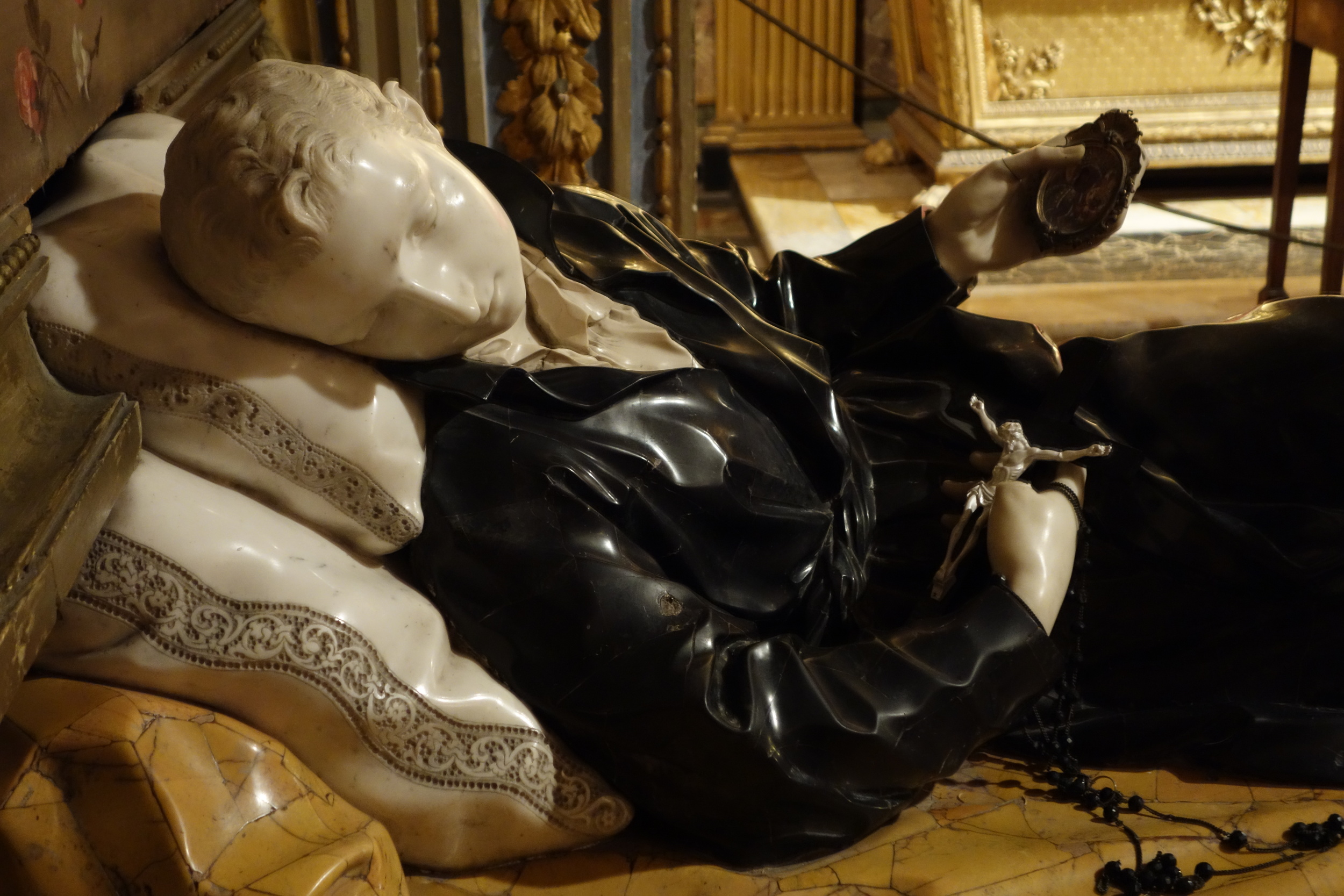
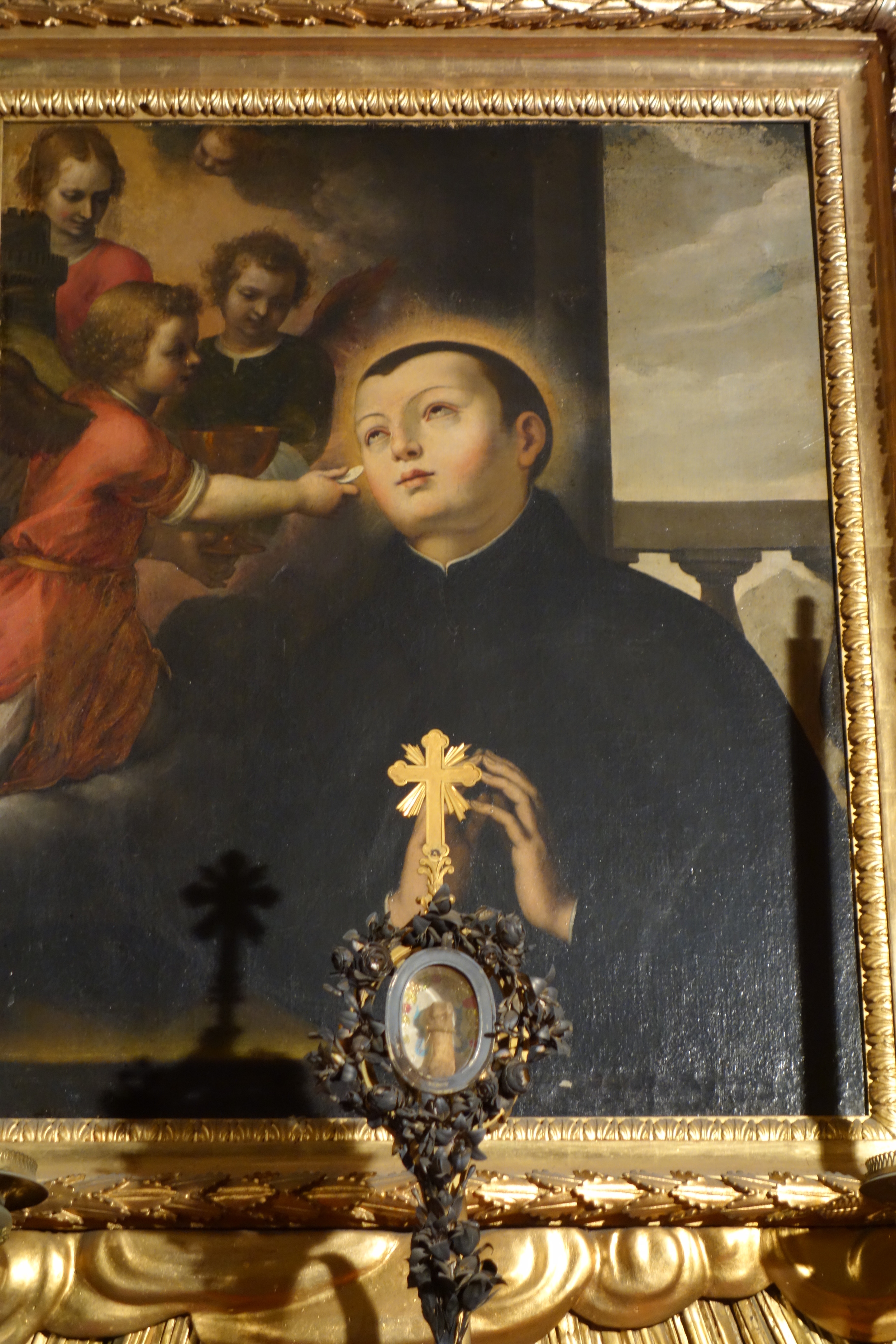

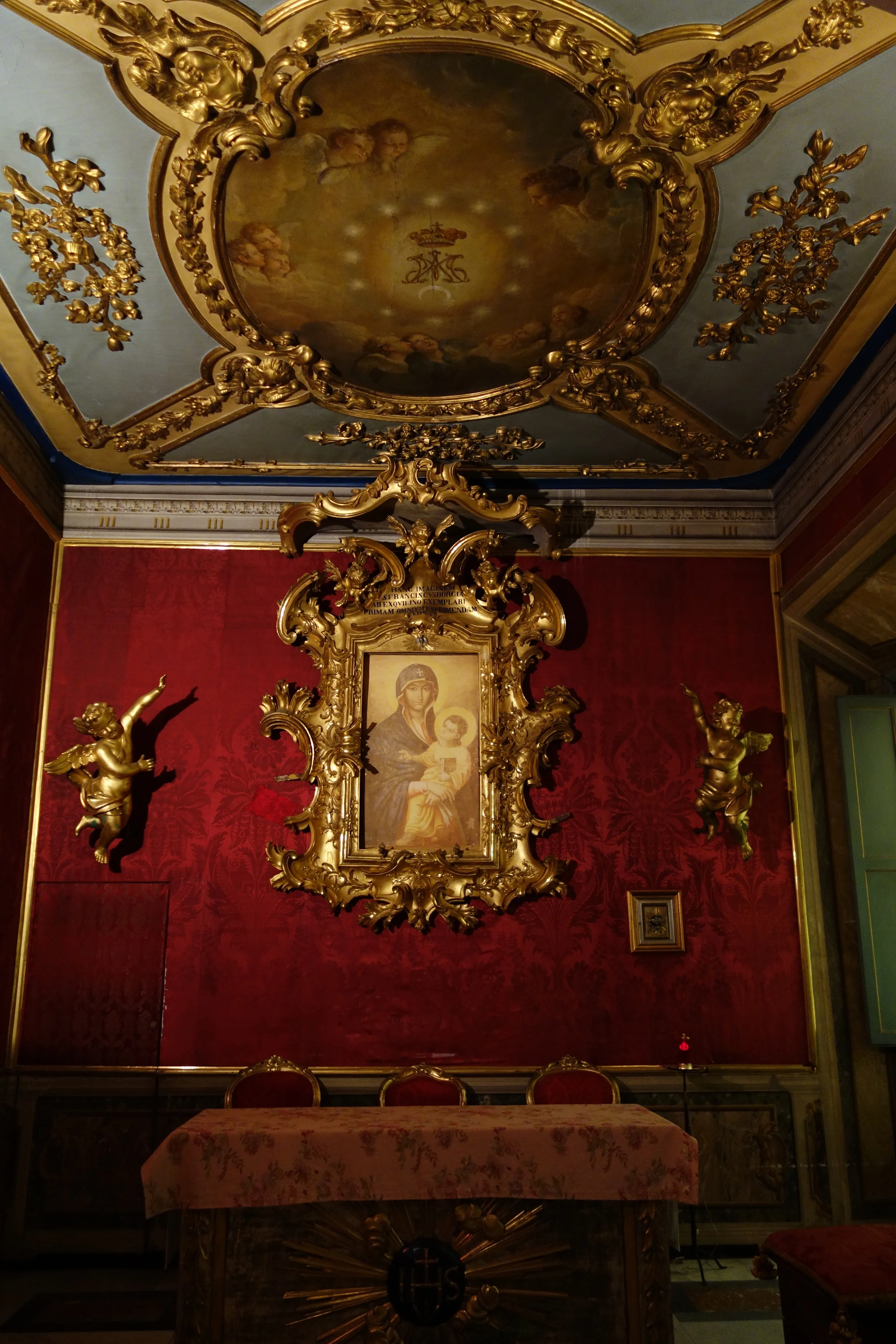
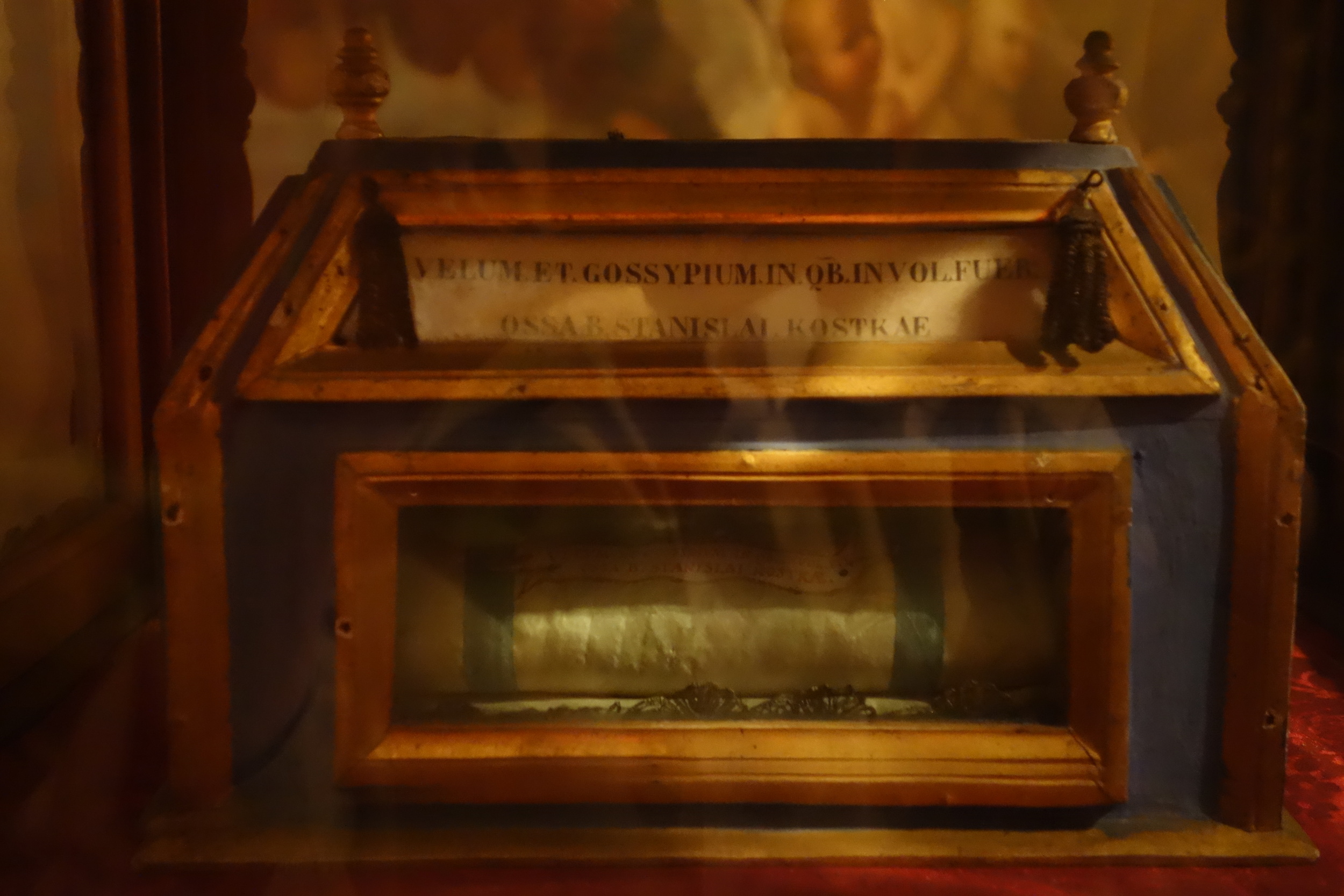
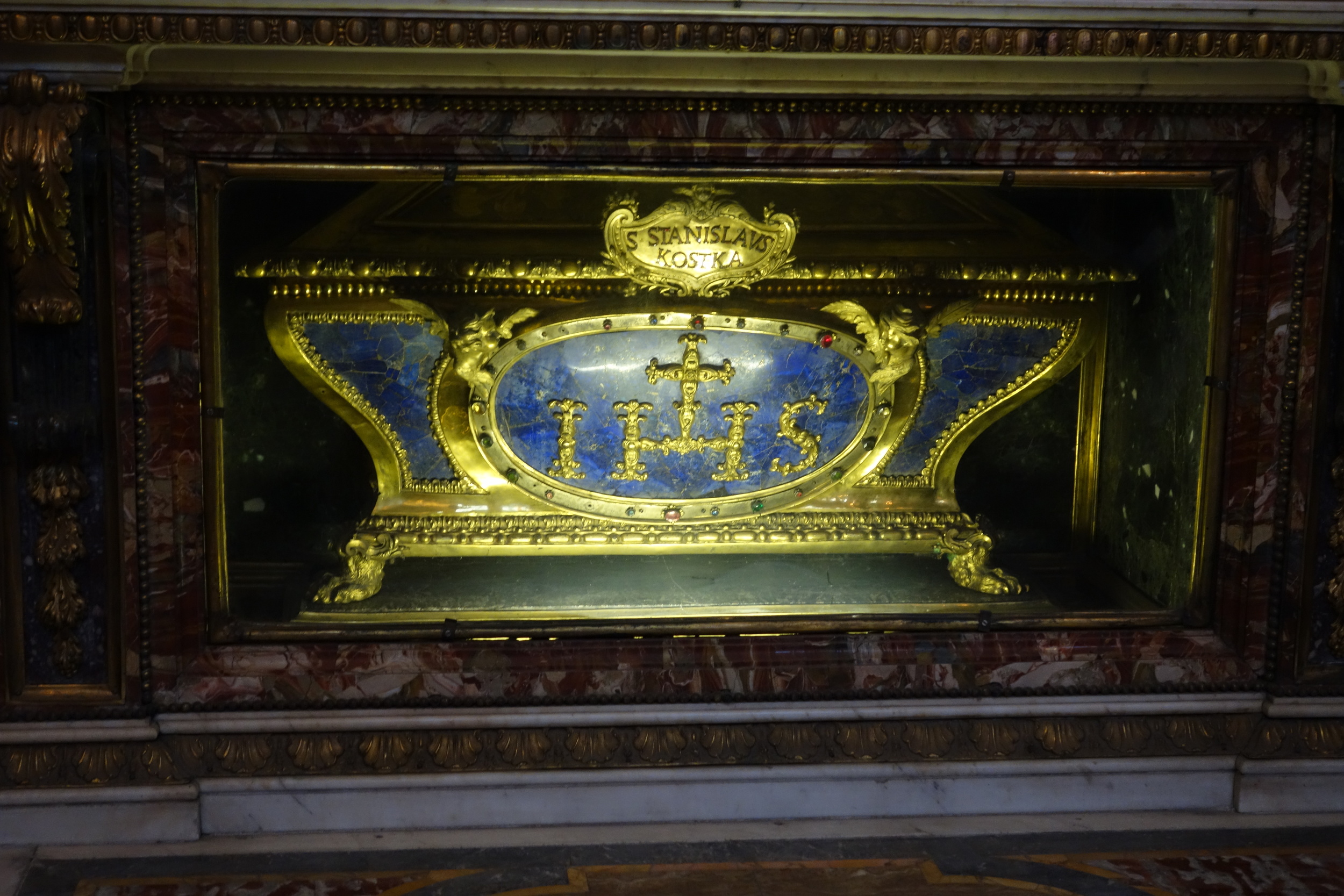
Your Custom Text Here
Plenty of tourists visit Sant'Andrea al Quinnale. They go to see what I like to think of as the great Baroque dance-off: two rival architects, two masterful jewel-like churches, and two wildly different styles just a few blocks apart. Bernini pops and locks here at Sant’Andrea while Borromini vogues at San Carlo alle Quattro Fontane. Taken together, they make an amazing architectural and artistic experience.
But a lot of people who visit Sant'Andrea for the architecture miss the best part. Sure they all get to see the gilded dome and the marble putti poking their little heads out, but they miss the rooms of St. Stanislaus Kostka, accessible up a staircase to the right if there’s a sacristan on duty.
The life-sized marble effigy of St. Stanislaus can catch you off guard when you walk in. The rooms, while still Baroque, are softer and more personal, especially if you compare them to the church downstairs. This makes the sculpture even more shocking. Stanislaus is depicted as a young Jesuit novice of 18, moments away from death. He died after coming down with a fever and you can almost see the sweat beading up on the stone. The bilious colors of marble are typical of polychrome funerary work in Rome- they’re purposefully sickly and unsettling. Sometimes this particular pose is called trepasso, literally the Italian word for transition. It shows a moment of ecstasy between life and death. It was a favorite of Bernini’s so it’s fitting that this example by Le Gros wound up in his best church.
Since there’s no barrier around the piece, you really get the sense that you’re in the room with the saint and you can examine the sculpture closely. In one hand he holds a small, framed image of the Virgin Mary, in the other a real rosary. Above his head you can see where the painting’s frame has been curiously notched out to accommodate the sculpture which was installed first. Some of his relics and belongings are displayed in a case to the left. It’s one of those rooms that’s so intimate, you feel the need to tiptoe even if there’s no one else there.
Downstairs you can see his relics in a lapis urn, similar to the ones used by fellow Jesuits at Il Gesu.
Plenty of tourists visit Sant'Andrea al Quinnale. They go to see what I like to think of as the great Baroque dance-off: two rival architects, two masterful jewel-like churches, and two wildly different styles just a few blocks apart. Bernini pops and locks here at Sant’Andrea while Borromini vogues at San Carlo alle Quattro Fontane. Taken together, they make an amazing architectural and artistic experience.
But a lot of people who visit Sant'Andrea for the architecture miss the best part. Sure they all get to see the gilded dome and the marble putti poking their little heads out, but they miss the rooms of St. Stanislaus Kostka, accessible up a staircase to the right if there’s a sacristan on duty.
The life-sized marble effigy of St. Stanislaus can catch you off guard when you walk in. The rooms, while still Baroque, are softer and more personal, especially if you compare them to the church downstairs. This makes the sculpture even more shocking. Stanislaus is depicted as a young Jesuit novice of 18, moments away from death. He died after coming down with a fever and you can almost see the sweat beading up on the stone. The bilious colors of marble are typical of polychrome funerary work in Rome- they’re purposefully sickly and unsettling. Sometimes this particular pose is called trepasso, literally the Italian word for transition. It shows a moment of ecstasy between life and death. It was a favorite of Bernini’s so it’s fitting that this example by Le Gros wound up in his best church.
Since there’s no barrier around the piece, you really get the sense that you’re in the room with the saint and you can examine the sculpture closely. In one hand he holds a small, framed image of the Virgin Mary, in the other a real rosary. Above his head you can see where the painting’s frame has been curiously notched out to accommodate the sculpture which was installed first. Some of his relics and belongings are displayed in a case to the left. It’s one of those rooms that’s so intimate, you feel the need to tiptoe even if there’s no one else there.
Downstairs you can see his relics in a lapis urn, similar to the ones used by fellow Jesuits at Il Gesu.